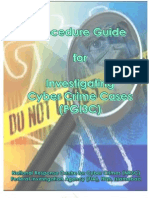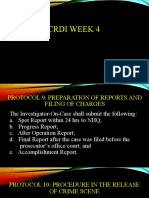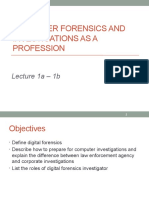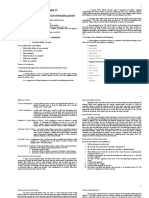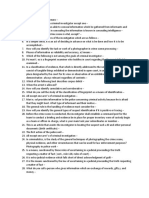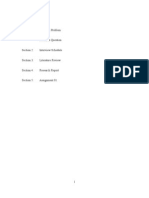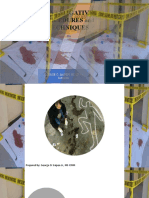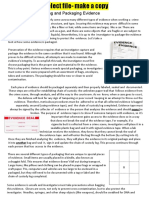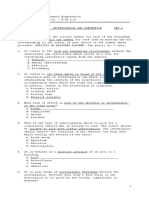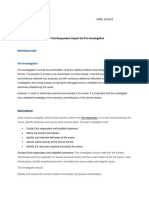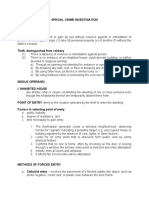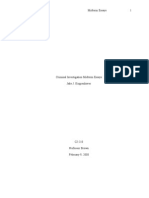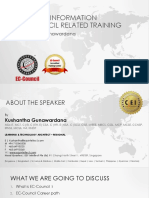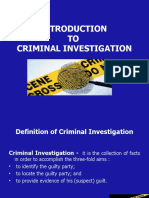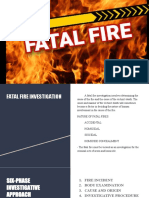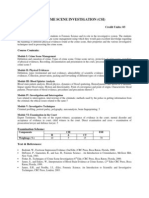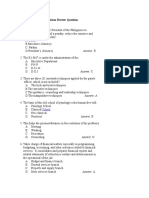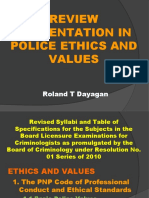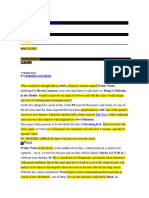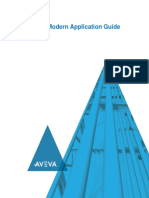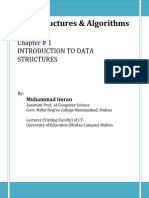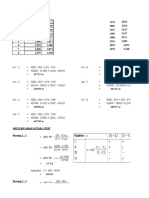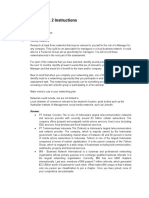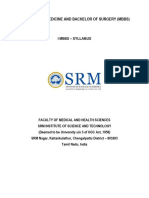100% found this document useful (1 vote)
320 views17 pagesCrime Detection Review Questions
The document contains a review test with 35 multiple choice questions about various concepts in crime detection and criminal investigation. Some of the key topics covered include admissible evidence in court, the roles of different law enforcement positions/agencies, common investigation techniques like interrogation, surveillance, undercover work, and search and seizure. The questions also address important evidentiary concepts like probable cause, chain of custody, physical evidence, and the goals and definitions of interrogation techniques.
Uploaded by
roelalviarCopyright
© © All Rights Reserved
We take content rights seriously. If you suspect this is your content, claim it here.
Available Formats
Download as DOCX, PDF, TXT or read online on Scribd
100% found this document useful (1 vote)
320 views17 pagesCrime Detection Review Questions
The document contains a review test with 35 multiple choice questions about various concepts in crime detection and criminal investigation. Some of the key topics covered include admissible evidence in court, the roles of different law enforcement positions/agencies, common investigation techniques like interrogation, surveillance, undercover work, and search and seizure. The questions also address important evidentiary concepts like probable cause, chain of custody, physical evidence, and the goals and definitions of interrogation techniques.
Uploaded by
roelalviarCopyright
© © All Rights Reserved
We take content rights seriously. If you suspect this is your content, claim it here.
Available Formats
Download as DOCX, PDF, TXT or read online on Scribd
/ 17

